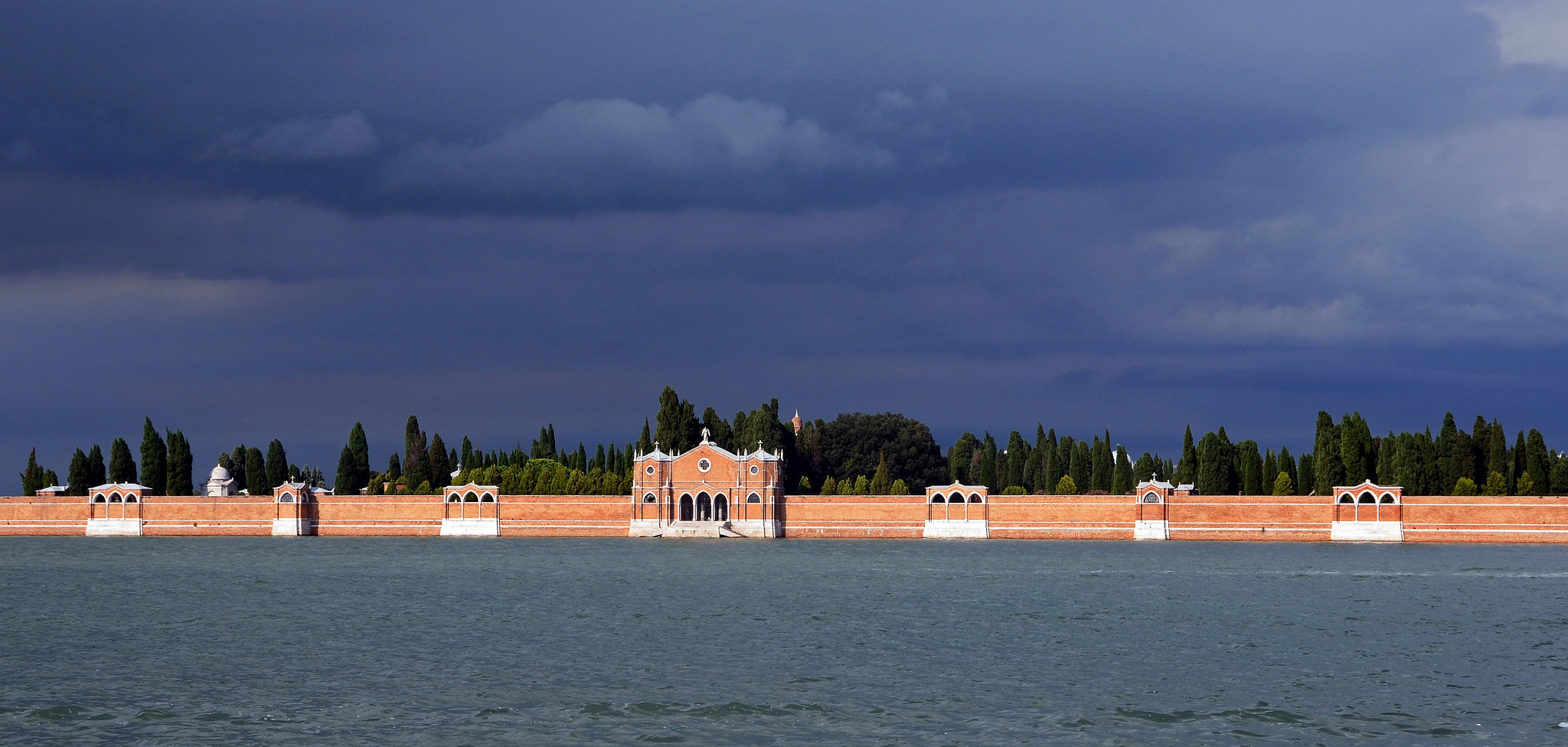San Michele is an island in the Venetian lagoon with a curious origin.
Indeed, it wasn't always as we see it today.
There were originally two islands here, San Michele and San Cristoforo della Pace.
Today, I'd like to tell you more about this exceptional place.
San Michele: article summary
A brief history of the island of San Michele
The island of San Michele has been home to Venice's largest cemetery for many centuries. In 1804, with the Edict of Saint-Cloud, the burial of the deceased was made illegal. are no longer possible in cemeteries and churches.
And so, in 1806, it was deemed urgent to find a solution in Venice too. It was Napoleon Bonaparte himself who chose the island of San Cristoforo to house the city's cemetery. Feeling the need to enlarge it soon afterwards, they thought of the nearby island of San Michele. The solution they found, however, involved a special kind of work: the stream separating the two islands was filled in to form a single island.
Today, if you look for the island of San Cristoforo della Pace on any map, you won't find it: once it became part of San Michele, it lost its identity. But that doesn't mean it's not important to know its history. In fact, it's not just closely linked to the island of San Michele, but also to the entire city of Venice.

The missing island of Venice
In the 14th century, San Cristoforo della Pace was chosen as the site for a windmill. This strip of land later housed a women's hospice, later run by the Augustinian nuns.
Subsequently chosen as a Christian burial ground, the task of building the cemetery was entrusted to Giannantonio Selva. In May 1813, it was completed on June 28 of the same year.
However, the history of San Cristoforo della Pace and its cemetery came to a halt in the first half of the 19th century. Space soon became insufficient and the only solution was to occupy the island of San Michele.
Today, San Cristoforo remains the historical testimony of a vanished past. It can only be remembered through documents.
Visit the church of San Michele
Tradition has it that the history of the island of San Michele begins in the Xᵉ century, when a church dedicated to the archangel Michael was built, commissioned by the Briosa and Brustolana families.
It is also said that in the past, it was called Cavana de Muran. In fact, it served as a shelter for boats from the neighboring island of Murano.
Legend has it that the founder of the Camaldolese, San Romualdo, went there. Whether this is true or not, what is certain is that the bishops of Torcello and San Pietro in Castello in 1212 granted the present church to the Camaldolese order. It has not only been renovated, but a monastery was also built next door.
In the second half of the 15th century, the task of rebuilding the entire complex was entrusted to architect Mauro Codussi, an important name in Venice. He was the designer of such prestigious buildings as the church of Santa Maria Formosa and Ca' Vendramin Calergi. Built between 1469 and 1479, the San Michele church is considered Venice's first Renaissance church.
The interior is divided into three naves with semicircular arches supported by columns. The coffered ceiling is embellished in the central section with a carved, gilded rose window, clearly visible against the blue background.
The Venice cemetery: an unusual place
San Michele is best known for its cemetery. The interest of tourists in visiting it is not strange, as it houses the remains of many famous people.
In 1810, by Napoleonic decree, the Camaldolese monastery on San Michele was abolished and the island became the property of the State, which in turn sold it to the municipality in order to unite it with San Cristoforo.
The first burials at San Michele thus began in 1826, and once the two islands had been united, in 1843 a competition was launched to unify the complex stylistically.
An architect for the cemetery
The winner was Lorenzo Urbani, but work came to a halt for lack of funds. So, in 1858, a new competition was announced, this time won by Annibale Forcellini of Treviso. The cemetery was thus built, although with between 1870 and 1876.
A remarkable restoration project was carried out in 1998 by renowned architect David Chiepperfield.
The two cloisters are remarkable. The smaller cloister is located immediately beyond the entrance portal and is Gothic in style, with an irregular floor plan and a well in the center. The larger cloister, on the other hand, was built by Giovanni Buora and has three sides surrounding the adjacent magnolia garden.
Inside, the cemetery is divided into three zones, according to religious denomination: Catholic, Orthodox and Evangelical. A section reserved for the Jewish religion is missing, as there is a cemetery dedicated to this religion at the Lido.
The small island of San Michele is a a must when visiting Venice. A bit like the cemetery at Père-Lachaise, you can discover the tombstones of public figures who have worked for to make Venice one of Italy's most beautiful pearls.
What to do in Venice in 1 day, 2 days, 3 days, 5 days, a week?
Whatever the length of your stay, I invite you to download my special Venice guide.
It's free and in PDF format.
All you have to do is tell me below which e-mail address you'd like to receive it at.
EDIT: you can't enter your email?
Take the quiz at the top of this article and you'll be able to register your email address to receive the special Venice guide!
Leave a Reply